When’s the last time you looked at your own wine labels? I mean REALLY looked at them—from the consumer’s point of view?
 We recently traveled through airports in Amsterdam, Madrid, Barcelona, and Lisbon and—of course—examined the wine choices in each duty-free shop. I was struck by the creativity of some of the packaging, especially in the Champagne category. I was also amazed by how mundane some of the wine packaging was, making the bottles with creative labeling stand out even more.
We recently traveled through airports in Amsterdam, Madrid, Barcelona, and Lisbon and—of course—examined the wine choices in each duty-free shop. I was struck by the creativity of some of the packaging, especially in the Champagne category. I was also amazed by how mundane some of the wine packaging was, making the bottles with creative labeling stand out even more.
Packaging is crucial for selling to consumers, restaurants, somms, distributors—anyone who is making a purchasing decision. Ironically, a person’s first impression of a wine is visual. Your packaging has to grab their attention and prompt them to consider tasting it.
A recent blog post by Vicki Denig on Wine-Searcher quotes several wine authorities. Dalton Cannizzo of importer/distributor giant Winebow notes that visibility, clarity, and design of a label deeply matter.
“A buyer’s decision to bring in a wine starts with the gauntlet of taste, but that is quickly followed by an examination of the label,” he says, noting that if a label is hard to read or has a poor layout, the wine will be pushed aside, regardless of how good it is.
He goes on to reference an industry joke that you can sell more of any wine if the winery adds a bird to the label. In other words, “Put a bird on it!” He adds that, “While this will engender groans in my colleagues, it is an absolute truth from my experience.”
Neil Thompson of Park Avenue Fine Wines in Portland feels larger retailers may rely on labels more than smaller shops.
“The customer is more likely to purchase based on trusting the opinion of the wine professional helping them,” he says. “We often hear, ‘I usually buy by the label,’ but it seems to be a reference to instances where one is stuck at, say, a supermarket, and does not have professional assistance. Then, yes, the label is all anyone has to go on.”
 In Chicago, Evie Olson of Craft + Bottle sums it up best: “Labels play an enormous role in consumers’ decisions to buy or not buy wine; it’s only natural, as humans are visual creatures, drawn to anything that is aesthetically pleasing.” She explains that many consumers are still intimidated by wine, so gravitating toward an easy-to-understand label is instinctive.
In Chicago, Evie Olson of Craft + Bottle sums it up best: “Labels play an enormous role in consumers’ decisions to buy or not buy wine; it’s only natural, as humans are visual creatures, drawn to anything that is aesthetically pleasing.” She explains that many consumers are still intimidated by wine, so gravitating toward an easy-to-understand label is instinctive.
How do your labels stack up against the others in your category? Think about all the places they need to shine, to be distinctive—your tasting room, on wine shop shelves, in supermarket displays, on restaurant wine lists.
Are your labels working for you? If not, let’s take a look together. Capiche has the resources to help you create a new look that will match the quality of your wine and brand while also appealing to your target audiences.
Visibility, clarity, and design of a label deeply matter. Share on X


Leave a Reply